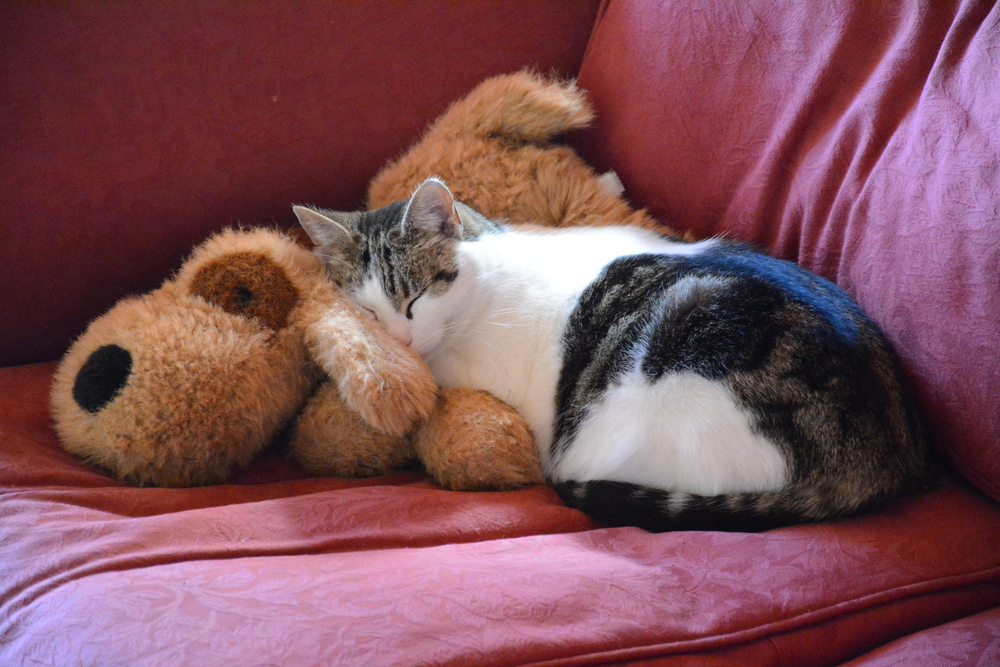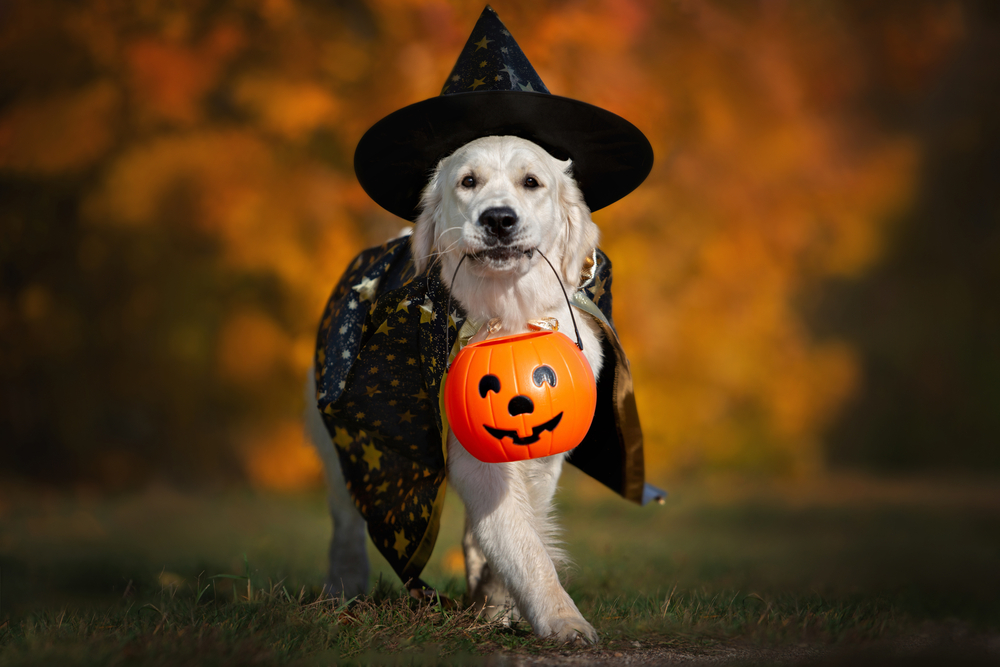When the leaves begin to change colors, and skeletons and jack-o’-lanterns appear on porches, it can only mean one thing—Halloween is coming. This fun and spooky time of year is beloved by children—and children at heart—but for pets, this holiday can be truly scary. Don’t let your pet be frightened this Halloween. Use our Groves Veterinary Clinic team’s Halloween pet safety guide to avoid holiday hazards that can harm your pet.
#1: Decorate with your pet in mind
Decorations add to the festivity, but they can cause problems for a curious pet. Consider your pet when decorating your home and avoid these potential Halloween hazards:
- Pumpkins and jack-o’-lanterns — Pumpkin can be good for your pet in small quantities, but too much can cause digestive issues, and candle-lit jack-o’-lanterns and tail wagging do not mix well. Keep carved pumpkins and candles up high where your pets can’t knock them over, get burned, or start a fire.
- Cords and battery-powered decorations — Electrical and battery-operated decorations can entice a playful pet and can cause serious injury, such as burns, electrical shock, and intestinal blockages, if swallowed. Unplug decorations when not in use, and keep battery-powered decorations out of your pet’s reach.
#2: Stash the treats away from pets
Halloween wouldn’t be the same without all the sugary candy, but many treats that kids bring home can be toxic for pets, including:
- Chocolate — Chocolate in all forms—especially dark or baking chocolate—can be dangerous pets.
- Raisins — Raisins and grapes are extremely toxic for pets and can lead to kidney failure.
- Sugar-free candy — Xylitol is a naturally occurring substance commonly used as a sugar substitute in many foods and candies. A pet who ingests only small amounts of xylitol can suffer with hypoglycemia (i.e., low blood sugar), seizures, liver failure, or sometimes death.
- Candy corn — This popular Halloween staple contains mostly sugar and artificial colors, which can cause your pet a stomach upset or other digestive health issues. Some candy corn contains xylitol, which is toxic for pets
- Candy wrappers — Not only does candy cause problems for pets—the wrappers can cause intestinal blockages, so ensure they are put in a secure trash can and not left out for your pet.
Not surprisingly, candy-related pet health emergencies drastically increase around holidays—especially Halloween, with its overflowing candy buckets. Ensure your children know that candy can make their pet sick, and remind them not to share, or leave their candy haul where your pet can reach. Also, keep the candy bowl out of pets’ reach in between trick-or-treaters. If you suspect your pet has ingested something toxic, contact Groves Veterinary Clinic or the ASPCA Pet Poison Control Center immediately.
#3: Choose pet-friendly costumes
Many people love the idea of wearing a creative costume and becoming someone—or something—else for a night, but pets cannot rationalize costumes, and may become stressed and uncomfortable when they wear an outfit. If you decide to dress up your pet, prioritize their safety and comfort with these tips:
- Ensure the material isn’t flammable.
- Choose a loose-fitting costume that does not restrict their breathing, mobility, or vision.
- Watch your pet for signs of overheating.
- Don’t leave your pet unattended while in costume.
- Remove all small pieces (e.g., buttons, ribbon) that could break off and be swallowed.
#4: Keep current identification on your pet
Home is the safest place for your pet on Halloween night. The most well-behaved pet can react unpredictably to the strange sights and sounds, and get loose and run away unnoticed while the doors are frequently opening and closing and everyone’s attention is on the trick-or-treaters. Also, ensure your pet is wearing a secure collar with up-to-date identification tags. Ensure your pet is microchipped before Halloween, because microchipping, which takes only a few minutes, is the only safe, permanent method that will reunite you with your lost pet.
#5: Create a safe space for your pet

The stream of trick-or-treaters at your door on Halloween can be scary and stressful for pets, so keep them in a separate room away from the front door. Create a calm oasis with the following creature comforts:
- Comfy pet bed
- Favorite toys
- Television or radio that you leave on provide background noise
- A long-lasting chew toy to distract your pet and alleviate stress
Also, exercising your pet and providing quality time in the late afternoon before trick-or-treaters hit the streets will help them stay calm.
We hope this guide helps you plan a safe, fun, and fear-free Halloween for your pet. However, if your pet usually becomes anxious around strangers, crowds, or loud noises, contact our Groves Veterinary Clinic team. We can consider anti-anxiety medication to reduce your pet’s stress this Halloween.







